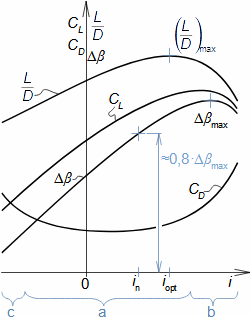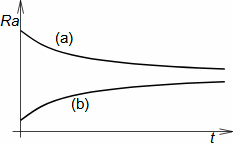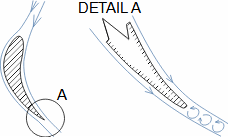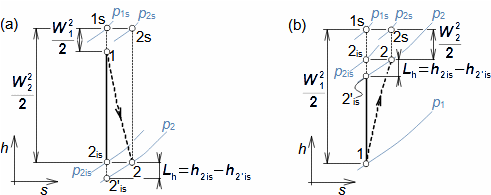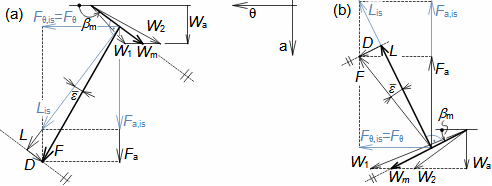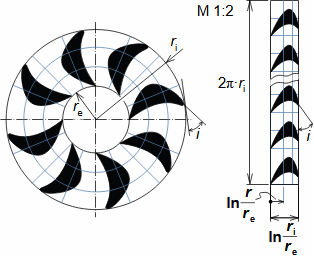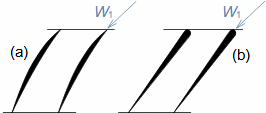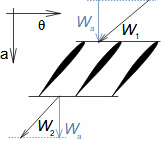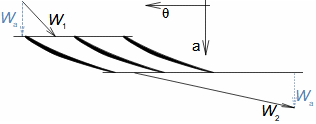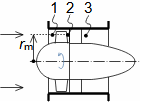Basic concepts of aerodynamics of profile cascadesAirfoil aerodynamicsDragLiftThe aerodynamics of profile cascades is based on the definitions of aerodynamic quantities used in the description of the airfoils aerodynamics [Škorpík, 2022, Aerodynamics of airfoils]. This means that for a profile included in a profile cascade, one can also distinguish between drag and lift, which can be calculated using the same formulas as in the case of airfoils, with the difference that instead of the attack velocity, the mean aerodynamic velocity in the cascade is assumed, so that the drag is in the direction of this mean velocity and the lift is perpendicular to this velocity, see Formulas 1.  1: Formulas for blade drag and lift in blade cascade (b) section through linear blade cascade; (b) formulas for calculating drag and lift of straight blade in linear blade cascade; (c) relations between velocities and forces acting on straight blade.
D [N] drag; L [N] lift; F [N] force on blade; ρ [kg·m-3] working fluid density; Wm [m·s-1] mean aerodynamic velocity in cascade; c [m] chord; γ [°] stagger angle of profile in cascade; b [m] width of blade cascade; l [m] length of straight blade; CD, CL [1] drag and lift coefficient of profile in profile cascade; s [m] pitch. θ, a-labelling of axes in coordinate system.Lift coefficientDrag coefficientWind tunnelJapikse,1997The aerodynamic coefficients C of the profiles in the cascades are measured in the wind tunnels of the linear blade cascades (Figure 2) for different combinations of velocities and angles of attack. The blade cascade in the wind tunnel consists of several (5 to 7) straight blades inserted obliquely into the tunnel so that the working fluid flow follows the direction of relative velocity in the actual blade cascade. The inlet and outlet flow areas of the tunnel correspond to the flow areas of the blade cascade under test. Wind tunnel designs for compressor blade cascade are given, for example, in [Japikse, 1997, p. 11-7] and for turbine blade cascades in [Japikse, 1997, p. 6-22]. 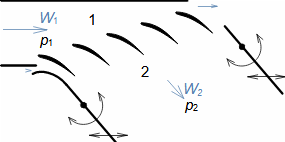 2: Wind tunnel for measuring blade cascades |
